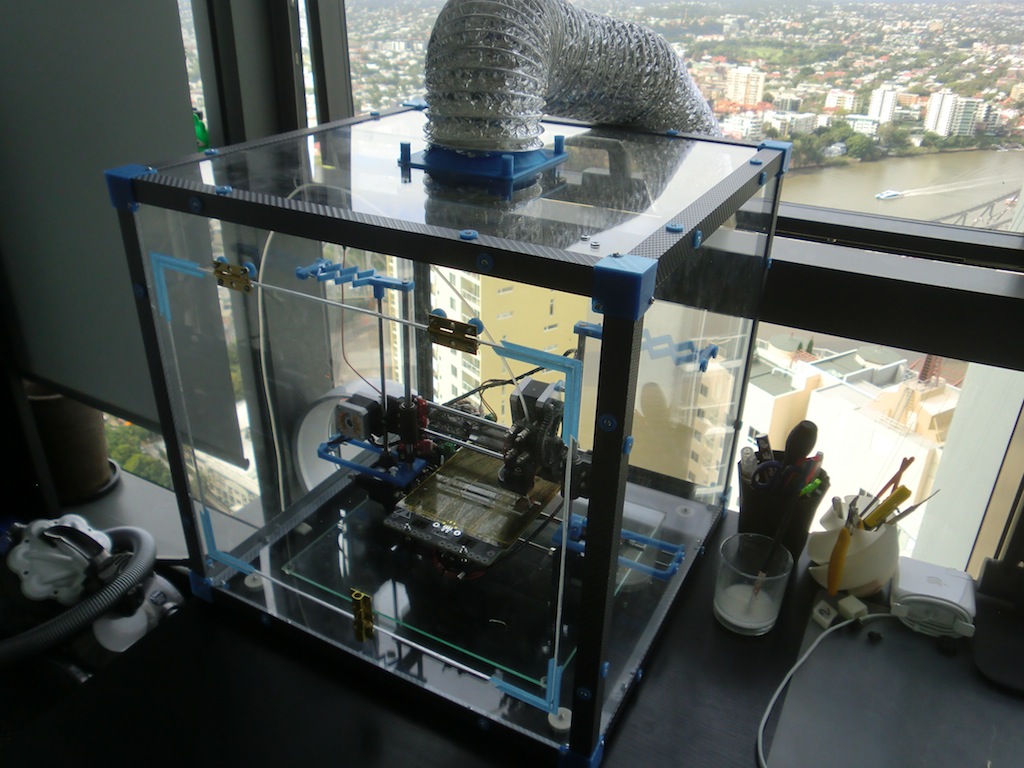Study Shows Some 3D Printing Fumes Can Be Harmful
Steve Dent | February 1, 2016
If you're printing softer ABS plastics, researchers recommend decent ventilation
If you do a lot of 3D printing and are worried about the fumes, you may want to read a new study from US and French researchers. It measured the amount of particles emitted by five 3D printers using nine different filament materials. The new research builds on two previous studies, but the team tested more printers and plastics, and measured more kinds of potentially hazardous fumes. As you might suspect, they discovered that you should be 3D printing in a well-ventilated room or use an enclosed printer with a vent, particularly while printing with ABS, nylon and similar materials.
 |
| A clear acrylic box for the Portabee 3D printer. Source: https://www.igorkromin.net/index.php/2013/06/05/a-clear-acrylic-box-for-the-portabee-3d-printer-part-2-adding-an-exhaust-vent/ |
<more at http://www.engadget.com/2016/02/01/study-shows-some-3d-printing-fumes-can-be-harmful/; related links: http://spectrum.ieee.org/nanoclast/semiconductors/nanotechnology/nanoparticles-emitted-from-3d-printers-could-pose-a-risk (Nanoparticles Emitted from 3D Printers Could Pose a Risk. July 29, 2013) and http://pubs.acs.org/doi/full/10.1021/acs.est.5b04983 (Emissions of Ultrafine Particles and Volatile Organic Compounds from Commercially Available Desktop Three-Dimensional Printers with Multiple Filaments. Parham Azimi, Dan Zhao, Claire Pouzet, Neil E. Crain and Brent Stephens. Environ. Sci. Technol., 2016, 50 (3), pp 1260–1268. DOI: 10.1021/acs.est.5b04983. Publication Date (Web): January 7, 2016. [Abstract: Previous research has shown that desktop 3D printers can emit large numbers of ultrafine particles (UFPs, particles less than 100 nm) and some hazardous volatile organic compounds (VOCs) during printing, although very few filament and 3D printer combinations have been tested to date. Here we quantify emissions of UFPs and speciated VOCs from five commercially available filament extrusion desktop 3D printers utilizing up to nine different filaments by controlled experiments in a test chamber. Median estimates of time-varying UFP emission rates ranged from ∼108 to ∼1011 min–1 across all tested combinations, varying primarily by filament material and, to a lesser extent, bed temperature. The individual VOCs emitted in the largest quantities included caprolactam from nylon-based and imitation wood and brick filaments (ranging from ∼2 to ∼180 μg/min), styrene from acrylonitrile butadiene styrene (ABS) and high-impact polystyrene (HIPS) filaments (ranging from ∼10 to ∼110 μg/min), and lactide from polylactic acid (PLA) filaments (ranging from ∼4 to ∼5 μg/min). Results from a screening analysis of potential exposure to these products in a typical small office environment suggest caution should be used when operating many of the printer and filament combinations in poorly ventilated spaces or without the aid of combined gas and particle filtration systems.]) >

i really like this article please keep it up.
ReplyDeletedrukarka 3d